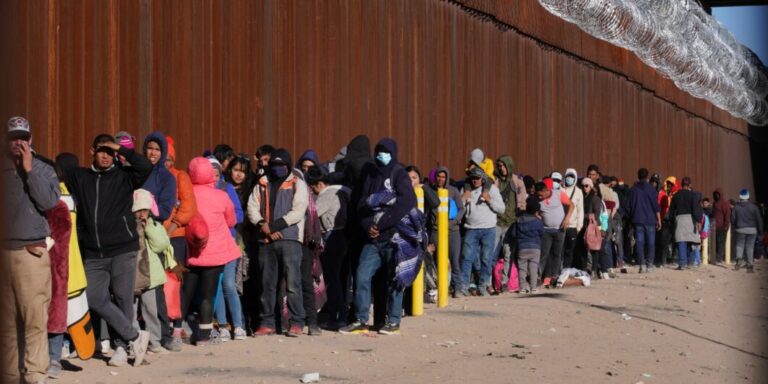The 2025 Government Shutdown
The 2025 Government Shutdown: How It Started and Where We Stand Today
The 2025 Government Shutdown: How It Started and Where We Stand Today
The U.S. government entered the 2025 Government Shutdown after Congress failed to finalize long-term appropriations before the continuing resolution (CR) deadline. Lawmakers in both chambers had been negotiating to extend temporary funding, but deep divisions over border security, foreign aid, and domestic spending led to a lapse in appropriations for key federal agencies.
How the Shutdown Started
The shutdown began when the Senate and House could not agree on a comprehensive funding package to replace the expiring continuing resolution. The House passed a version with sharp cuts to discretionary spending and new immigration restrictions, while the Senate pushed a bipartisan bill maintaining current funding levels.
Negotiations stalled over:
-
Border enforcement and immigration provisions—a major sticking point between parties.
-
Foreign aid allocations, especially funding to Ukraine, Israel, and humanitarian programs abroad.
-
Domestic spending caps, with debates over education, healthcare, and environmental programs.
With no final agreement reached by midnight of the deadline, the government partially shut down, triggering furloughs and suspended services across multiple agencies.
President Trump’s Platform on Border Security and Sanctuary Cities
President Donald J. Trump has long made border enforcement a central issue of his political platform. He ran on restoring law and order at the border, curbing illegal immigration, and eliminating “sanctuary cities” that limit cooperation with federal immigration authorities.
During his campaign and presidency, Trump pledged to:
-
Strengthen the southern border through physical barriers, advanced technology, and increased personnel.
-
Expand ICE (Immigration and Customs Enforcement) operations to detain and remove individuals unlawfully present in the country.
-
Eliminate federal funding for sanctuary cities—jurisdictions that refuse to honor ICE detainers or share information with immigration enforcement.
-
Prioritize the safety of American citizens through stricter vetting, deportation of criminal aliens, and enhanced coordination among federal, state, and local law enforcement.
These goals remain key talking points among supporters who see secure borders as essential to national safety and economic stability. Critics, however, argue that such policies can lead to humanitarian challenges and strain relationships between immigrant communities and local governments.
The Sticking Point at the Border – The 2025 Government Shutdown
The border issue remains the single largest obstacle in resolving the current government shutdown. Lawmakers are divided over how much funding and authority should go toward enforcement, humanitarian relief, and immigration reform.
Key Points of Division
-
Funding Levels for Border Security & Enforcement
-
Republicans seek more funding for physical barriers, detention facilities, and personnel.
-
Democrats emphasize modern surveillance technology and humanitarian resources rather than expanded detention.
-
-
Immigration Status & Eligibility
-
Republicans want tighter restrictions on public benefits for undocumented immigrants.
-
Democrats reject tying healthcare or education cuts to immigration enforcement provisions.
-
-
Policy Riders on Funding Bills
-
Conservatives insist immigration reform measures must be attached to funding legislation.
-
Moderates and Democrats want a “clean” continuing resolution to reopen the government first.
-
-
Trust and Precedent
-
Some lawmakers fear that compromising without policy changes will weaken future border enforcement negotiations.
-
Others argue that policy should be debated separately to avoid prolonged shutdowns that harm the economy and federal workers.
-
Healthcare Access: Who Qualifies and Who Doesn’t – The 2025 Government Shutdown
The debate over federal spending has also reignited questions about who benefits from U.S. healthcare funding.
For U.S. citizens:
All federal healthcare programs (Medicare, Medicaid, CHIP, and ACA subsidies) are open to citizens who meet eligibility requirements such as age, income, or disability.
For lawfully present immigrants:
Many are eligible for federal programs, though some face restrictions like a five-year waiting period for Medicaid. Refugees, asylees, and certain humanitarian immigrants are generally covered without delay.
For undocumented immigrants:
Federal law excludes them from most health programs. They can receive emergency medical care under the Emergency Medical Treatment and Labor Act (EMTALA) and limited state-funded or local services, depending on where they live.
This distinction—citizen, lawful immigrant, or undocumented resident—plays a major role in budget debates, especially regarding emergency Medicaid and public-health spending in border states.
Foreign Aid: Oversight and Accountability Concerns – The 2025 Government Shutdown
Foreign assistance is another major factor in the current standoff. Critics have pointed to repeated instances of waste, fraud, and poor oversight in U.S. aid programs abroad.
Oversight agencies such as the State Department Office of Inspector General and the U.S. Agency for International Development, Proposed Closer (USAID) routinely identify mismanagement and inefficiency in large-scale programs.
Examples include:
-
Equipment and infrastructure in developing nations that sit unused after project completion.
-
Financial misreporting by contractors or partner NGOs.
-
Projects diverted for unintended political or military purposes in unstable regions.
While foreign aid represents less than 1% of the federal budget, it often becomes a political flashpoint during shutdown talks—particularly when lawmakers argue that domestic programs should take priority during fiscal constraints.
Our Take:
The path out of the shutdown depends on bipartisan compromise. Lawmakers are under increasing pressure from federal employees, defense contractors, and the public to reach an agreement. Short-term funding could temporarily reopen the government, but without consensus on border security, healthcare funding, and foreign aid oversight, a long-term resolution remains uncertain.
For now, citizens are urged to stay informed through official government updates and to contact congressional offices for assistance with affected services.


